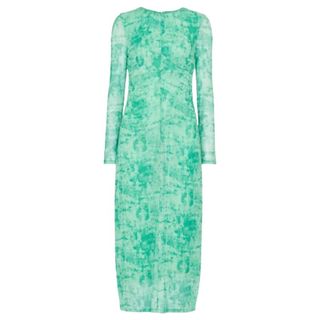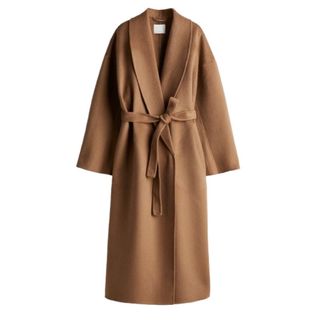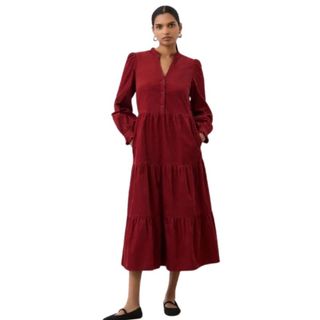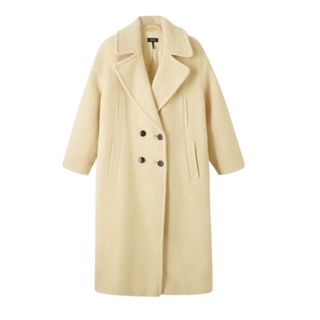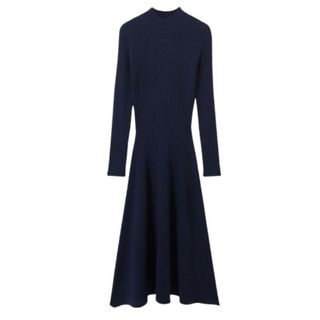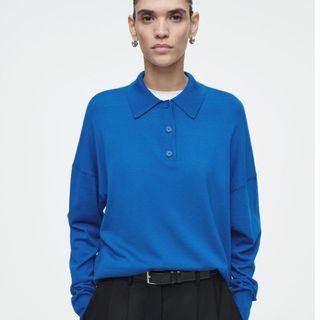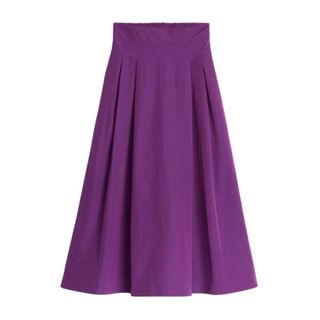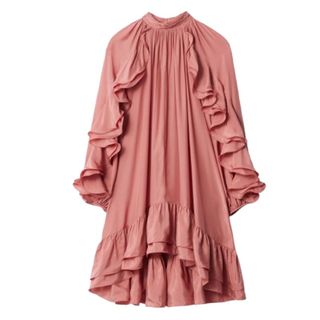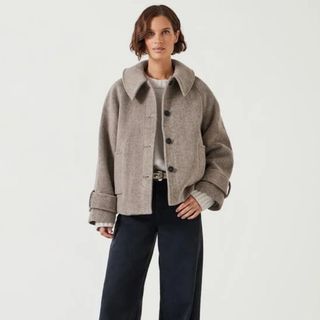What colour suits me? How to update your wardrobe with the most flattering shades for you
Looking through your clothes and asking, what colour suits me? Read our expert guide on complementing your skin tone
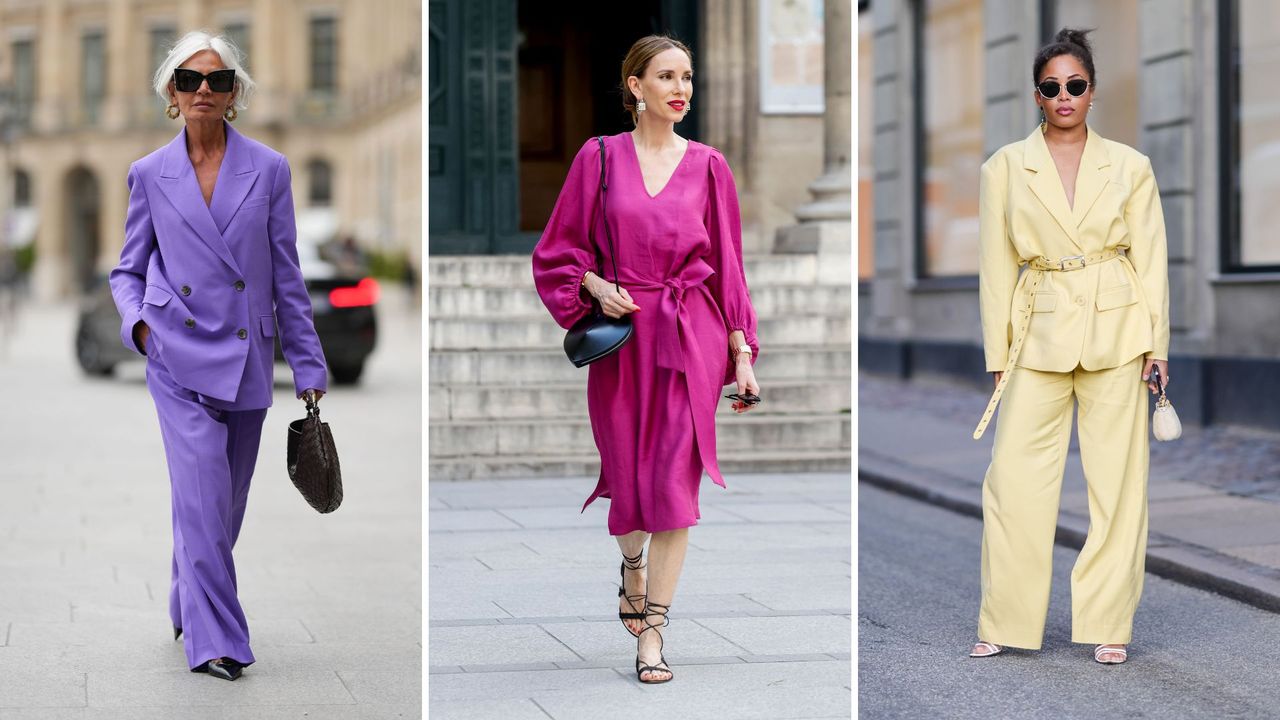

What colour suits me is a question that can be so important when deciding what to wear. It's easily answered, but tricky to know where to start. No doubt you've seen those colour analysis videos that are everywhere at the moment? To save you booking a consultation, we've spoken to the experts and tracked down the pieces to shop once you've found your perfect colour match.
Of course you should always wear what makes you feel good, even if that's head to toe black, but asking what colour suits me is the key to curating a capsule wardrobe. Mood-boosting brights are unlikely to go anywhere anytime soon, and it's worth knowing if the key fashion colour trends 2024 would work for you.
There are so many shades to help you shine this season, from bold pops of red to blue hues of all varieties. And don’t worry if your favourite colour doesn’t typically match your skin tone, because you can always introduce it through your accessories. Try adding a pair of heels to the best jeans to inject your favourite colour into your outfit. Far enough away from your face, it doesn't matter if the colour of the shoes doesn't technically 'suit you', so there's no need to sacrifice the colours you love.
"Wearing colour is all about confidence, and that starts with choosing shades that resonate with your personality. Start with one bold piece, whether it's a vibrant coat or a statement accessory, and let it be the focus. Confidence comes when you feel connected to what you’re wearing, so choose hues that make you feel empowered," explains Megan Watkins, Head Stylist at online fashion destination SilkFred.
What colour suits me?
When it comes to what colour suits you best, it's really about finding the right shade or a particular colour. According to experts, you can wear nearly any colour, but placement (as in where and how you wear it) and the exact hue is the real trick.
While darker colours have historically been seen as slimming, they can also be quite draining. Go too dark and your clothing will throw black onto your face, which "tends to widen and drop the jawline," explains Polly Holman, an associate lecturer at the London College of Fashion.
Meanwhile, "a colour that is too light will throw white up onto your face and make you look washed out." The darker your eyes, hair, and skin, the bolder you can go. The lighter your natural colouring, "the paler and closer to pastels you should go," she advises.
Sign up for the woman&home newsletter
Sign up to our free daily email for the latest royal and entertainment news, interesting opinion, expert advice on styling and beauty trends, and no-nonsense guides to the health and wellness questions you want answered.
However, knowing which colour family you belong to can help you to figure out exactly which hues will flatter you. Wearing one of ‘your' colours close to your face will light you up and make your hair and eyes 'pop'. Further down, your body though? Anything goes! This means you're mainly concerned with colours that will be closest to your face.
But if you're desperate to keep hold of all your black clothing (which can cause shadows to pool in lines and crevices when worn too close to the face), inject colour and brightness through colourful scarves or bold colourful jewellery. This styling trick means you can keep wearing black and dark hues on the top part of your torso, without draining your face.
What is colour analysis?
Colour analysis is a surefire method of answering what colour suits me? because it determines which colours of clothing and which makeup shades harmonise with a person's skin complexion, eye colour, and hair colour. It will also help you figure out the finer details, like what colour of jewellery suits you.
If you do want your colours read, I was lucky enough to have mine done with Kate, a size inclusive stylist. The process involves sitting in front of a mirror, whilst your analyst holds different shades of fabric just below your face to see which colours work. I discovered I was a warm Autumn. It’s amazing to see the difference, where some hues instantly washed me out, whilst others lifted my complexion in an instant.
“While knowing your colours can certainly help you feel confident, it’s just as important to consider how those colours make you feel. For curvy women, embracing bold, vibrant hues can be an act of rebellion against the outdated belief that darker shades are 'slimming.' It’s about letting your personality and confidence shine through in every outfit. By experimenting with rich jewel tones, warm earth shades, or even a splash of bright colour, you’re not hiding – you’re standing tall and owning your style. After all, it’s not just about fitting into fashion; it’s about fashion that fits you – inside and out,” says Kate.
There are two areas to consider when analysing your colour - your base skin tone and your overall colouring. Your base skin tone will be either warm or cool, while your overall colouring takes your eye and hair colour into consideration.
Anthony McGrath, a celebrity stylist, and lecturer at London's Fashion Retail Academy advises that it can be useful to "have a colour analysis with a stylist or professional colour analyst," however there are ways to figure out your colouring by yourself.
"In a nutshell, you can use your skin tone (skin, hair, and eyes) to determine whether you are warm or cool-toned, and your overall colouring - so how dark your skin is and the colour of your natural hair - to determine whether you are light or dark."
What skin tone am I?
The first step of using colour analysis to determine the best shades to suit you is to first figure out whether you have a warm or cool skin tone. A couple of colour analysis tests can help you figure your skin tone out quickly and easily.
Arm test
"Look at the underside of your arm in natural daylight, if you have a pink or rosy undertone and blue-tinted veins you have a cool skin tone," explains personal stylist Elaine Davies. "If you have a golden or apricot undertone and green-tinted veins you have a warm skin tone."
Fabric test
Still not sure? Try holding a piece of gold fabric under your chin (or trying on a gold necklace).
Now do the same with a piece of silver fabric or jewellery. Which shade lights up your complexion and makes your eyes pop? If it's silver, you're cool. If it's gold, you're warm.
What colour suits my skin tone?
Now that you've worked out your base skin tone, you can start to choose fashion and makeup colours based simply on whether you are cool or warm-toned.
Cool skin tone
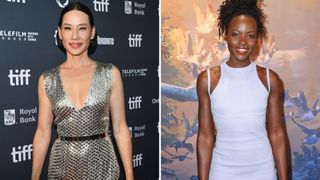
Lucy Liu and Lupita Nyong'o have cool skin tones
If you have pink or rosy undertones (like Angelina Jolie, Renee Zellweger, Oprah Winfrey, Lupita Nyong'o, Lucy Liu or Halle Berry), your skin tone is cool.
These skin tones usually burn easily in the sun and either don’t tan, struggle to get a tan or go red in the sun, as the skin will usually contain less pigment. Cool skin tones will usually have a pink or bluey-red undertone. This skin tone is also more likely to blush easily.
People with cool skin tones usually look best wearing clothes or makeup with blue undertones. Bright greens, deep purples, pinks, and both pale and bold blues will suit this skin tone well. Cool skin tones also tend to suit silver jewellery or even rose gold better than yellow gold jewellery.
Fashion editor’s picks…
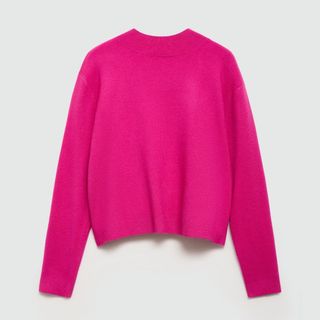
RRP: £35.99 | This lightweight sweater is perfect for layering with its simple neckline and fuss-free silhouette. Wear under a black blazer and let the pop of pink peek out. Finish with a chunky silver necklace for an added edge.
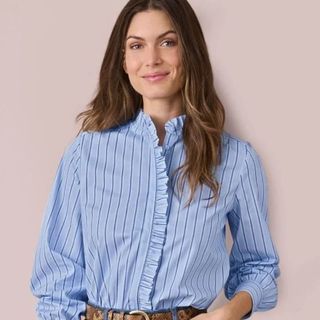
RRP: £34.99 | Every wardrobe needs a striped cotton shirt and the ruffle detailing gives this beauty an on-trend feminine update. Easy to dress up or down, style with some barrel leg jeans for a pulled-together everyday look.
Warm skin tone

Jessica Alba and Salma Hayek have warm skin tones
If you have golden undertones (like Nicole Kidman, Gwyneth Paltrow, Viola Davis, Heidi Klum or Beyonce), your skin tone is warm.
Warm skin tones will usually be able to tan quite quickly and easily and don't tend to get burnt very much, as usually they will have more melanin in their skin. Warm skin tones will usually have a yellowish or an olive brown undertone.
People with warm skin tones tend to look best in yellow-based colours, as they bring out the natural undertone more. Greens, browns, warm reds or oranges, peach, coral, and gold also suit this skin tone well. Peach Fuzz is the Pantone Colour of the Year for 2024, so it's your year!
Gold jewellery will also help to bring out the warm undertone of the skin and help you look more glowy and is a great accessory to add in texture and newness each season.
Fashion editor’s picks…
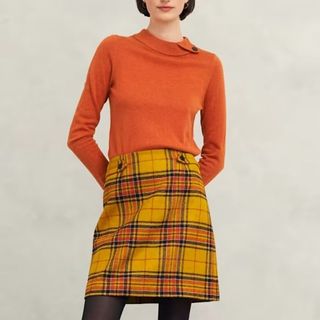
RRP: £99 | Embrace the autumnal vibes in this classic checked skirt. The warm colours will flatter your skin tone whilst the feminine a-line shape will show off your shape. Offset the shorter hem and team with the best wool jumpers and knee-high boots.
Colour analysis based on your overall colouring
If you want to pinpoint more precise colours that will suit you, you need to look at more than just your skin tone and consider your overall colouring.
You might have heard friends referring to themselves as spring, summer, autumn, or winter types. But what does it all mean? Well, if your skin tone is cool, you belong to the summer or winter family. If it's warm, you have spring or autumn colouring. Some people span multiple groups, but one tends to be primary.
Summer colouring
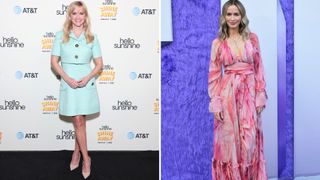
Reese Witherspoon and Emily Blunt have summer colouring
If you have a cool skin tone, naturally ash-toned blonde or light-mid brown hair (with no red or gold highlights), and pale blue, green or grey eyes, you have summer colouring.
What to wear if you have summer colouring
Teresa Chambers, a lecturer at London's Fashion Retail Academy advises, "summer types look best in soft pastels with blue undertones. Think light blues, pinks, yellows. Grey and blue hues (from pastel blue to navy) will also look great." These shades will all look good in the best dresses. Look out for new season knits in soft ice cream hues that will instantly brighten your look.
"However, yellow-based colours such as orange, tan, mustard, coral, and salmon pink are less flattering, and pure white may wash you out, so opt for soft off-white tones instead."
Fashion editor’s picks…
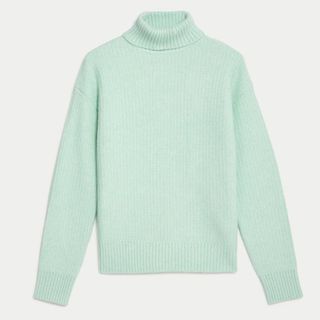
RRP: £25 | Much like the name suggests, this knit is delightfully soft. It has a regular fit for a slouchy look and a textured finish for added interest. Wear with other sweet pastels, grey or deep navy.
Winter colouring
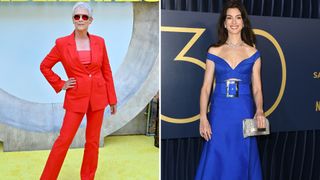
Jamie Lee Curtis and Anne Hathaway have winter colouring
If you have a cool skin tone, ash-toned medium to dark brown or black hair with no red or gold highlights, and deep blue, green or brown eyes, you belong to the winter family.
What to wear if you have winter colouring
Winter colouring calls for the boldest and richest of blue-based hues. This means that a bold top with your best jeans for women over 50 should be a go-to look.
Teresa Chambers said, "Vivid, icy, cool, and clear primary colours are great. Vivid blues, reds, and golden yellows will compliment your skin tone. Think scarlet red, fuchsia pink, royal blue, emerald green, and deep purple. You can also get away with black, charcoal grey, pure white tones, and deep purple."
However, you should try to steer clear of muted pastels and yellow or orange-toned shades, including rusty browns and brick reds.
Fashion editor’s picks…
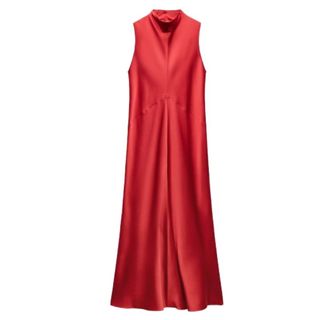
RRP: £59.99 | Perfect for party season, swap your LBD for the little red dress instead. One of the key shades of AW24, this slip design leans into that cool, 90s minimalism trend. Wear with some barely there sandals and a glittery clutch.
Spring colouring
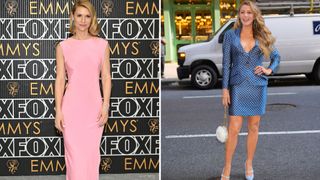
Claire Danes and Blake Lively have spring colouring
If you have a warm skin tone and golden blonde or light-medium brown hair with golden highlights, you have spring colouring. Spring types may have a mixture of warm and cool elements to their colouring.
What to wear if you have spring colouring
Spring types suit warm ‘true' brights such as brick red, coral, salmon pink, and true blue. Beige and ivory hues will also flatter. However, icy pastels, deep tones, or muted shades may drain you.
Anthony McGrath said, "Warm and delicate with yellow undertones are good for spring types. Dusky pinks, soft greens, neutral light greys are great. Although these types can also wear burnished oranges and deep purples and look fabulous."
With colour really making a comeback this season, you can take some key silhouettes to the next level. These bright tones will offer instant mood-boosting abilities so don't be afraid to pack a stylish punch. Get occasion ready and nail what to wear to a wedding with one of the best jumpsuits in a bright colour.
Fashion editor’s picks…
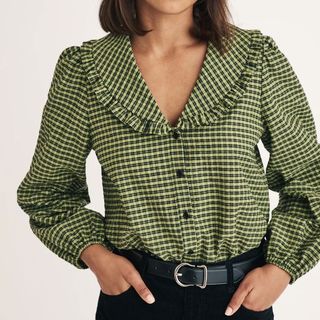
RRP: £59 | Gingham’s not just for summer, and this long-sleeve iteration is perfect for those chillier days. The flouncy collar adds interest, giving it a preppy twist. Team with some black wide-leg cords for your weekend getup.
Autumn colouring
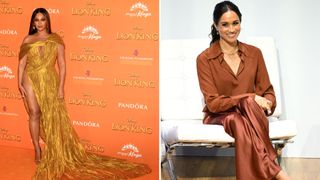
Beyonce and Meghan Markle have autumn colouring
If you have a warm skin tone and red, auburn, dark brown, or black hair with red, gold, or chestnut highlights, you belong to the autumn colour family. If you are pale, you probably have freckles.
What to wear if you have autumn colouring
Anthony McGrath advises, "rich autumnal colours flatter autumnal skin most, often with a warm/golden undertone, so think earthy reds, bronzes, rich browns, chocolate, and burnished golds. Warm muted tones like olive and dark greens, terracotta red, and burnt orange enhance autumnal complexions."
Luckily for those with autumn colouring, earthy reds, bronzes, olives and burnt orange colours tend to be available year through, meaning that even though insipid pastels wash you out, you don't need to panic when warmer months roll around. Make the most of gold accents and tones in the summer months, injecting this into some layered necklaces and gold-framed sunglasses or reading glasses to tap into the eyeglasses trends 2024 to really brighten your complexion. When it comes to blues, you can get away with navy, but other blue-toned hues might not work so well.
An autumn capsule wardrobe is ideal for these colours and will ensure everything in your closet slots together into a cohesive palette.
Fashion editor’s picks…
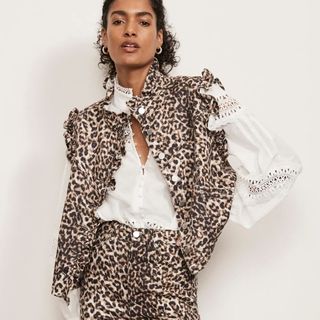
RRP: £115 | We all fell in love with the Mint Velvet leopard jeans and now they’ve dropped this oh-so-cute matching gilet too. The ruffle detailing adds a designer vibe, without the price-tag. Layer over blouses or knits on chillier days.
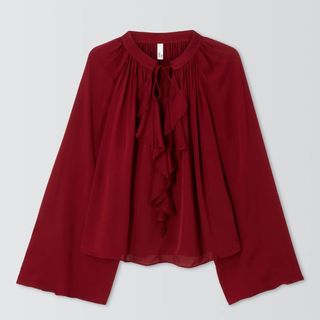
RRP: £69 | Burgundy is trending right now so get on board with this beautiful blouse from British clothing brand John Lewis. With statement sleeves and a frilly collar, it’s perfect for upping the ante on your white jeans outfits.
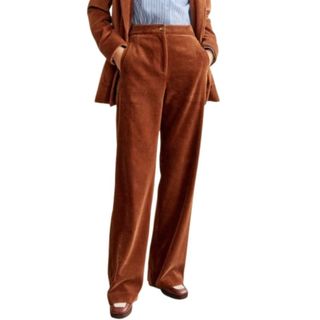
RRP: £130 | Swap the best wide leg jeans for a pair of corduroy trousers for an instant autumnal twist. The high waist on these beauties will lengthen your legs, especially when teamed with heels. Wear with the matching blazer for a 70s-inspired look.
Can my colour change?
It is possible that you had a colour analysis years ago but feel now that your colour has changed over time. Although your primary colour remains the same throughout your life there are things that can alter how flattering certain shades might appear. For example, dying your hair, going grey or even getting a tan can change how things seem and sit against our skin tone.
Getting a tan may mean that 'spring brights' appear more flattering than usual, whilst your usual 'summer' pastels suddenly start to wash you out. If this happens, you might want to think about a warmer hair colour to complement your holiday glow.
It is true however that as we age, skin and hair begin to lose pigmentation. But this does not change our natural colouring. With this in mind, it highlights the importance of knowing which colour family we belong to so that we can choose shades that enhance, rather than drain, our complexions. If you've found that your colouring has changed as you've gotten older, you may want to think about decluttering your closet to create an over 50s capsule wardrobe.
What clothes colours will look best on me?
Remember, there are very few colours you won't be able to wear, it's just working out the styling to make them enhance your face. The first stage should really be a full analysis of your existing clothing. Keep in mind as you're going through your clothing, do they match your colour family profile. If not, it doesn't mean you need to get rid of them, but you might need to reassess how you wear them. If the item is part of a group of colours that drain you, can you add jewellery, a scarf or even a cardigan to readdress the colour balance? If it's a dark top, can it be reworked under a bright blazer so that the largest amount of colour near your face is more flattering?
And just remember, there are very few colours you won't be able to wear, it's just working out the styling to make them enhance your face.
Are there other factors apart from your skin tone which would factor in what colour suits you?
Your hair and eye colour are important considerations too. Together with skin tone, this will help decide what colours work best for you.
"Wearing bright colours such as yellow, red, pink, and blue come with genuine psychological and physiological benefits," explains Shakaila Forbes-Bell, fashion psychologist and founder of Fashion is Psychology.
"Red and yellow, for example, have been found to increase blood pressure, heart rate, and eye movement, causing us to feel more alert, aroused, stimulated, and energetic. Blue, by comparison, produces calming bodily responses, making us feel more relaxed and serene.”
Charlie is the Deputy Fashion Editor at Future plc across multiple women’s magazines including Woman & Home, Woman and Woman's Own.
She bagged her first magazine job in 2009 and has previously written for titles including Stylist, Closer and Dare. Over the years Charlie has embraced anything that was thrown at her from styling celebrities to testing out the best jeans on the high street to writing about must-have beauty buys.
With a weakness for a printed midi dress, Charlie is on a mission to shop more sustainably and loves finding new ethical brands and second-hand buys.
- Aleesha BadkarDigital Beauty Editor, woman&home
- Caroline ParrFashion Ecommerce Editor
-
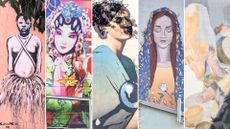 Striking street art from around the world and the creative artists behind it
Striking street art from around the world and the creative artists behind itFrom large scale murals to political statements, these bold artworks deserve your attention and admiration
By Lydia Swinscoe Published
-
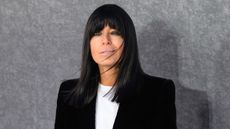 Claudia Winkleman says 'culottes are back' and we couldn't agree more
Claudia Winkleman says 'culottes are back' and we couldn't agree moreCulottes are a smarter alternative to jeans and they’re so comfortable we’re not surprised Claudia Winkleman loves them.
By Emma Shacklock Published
-
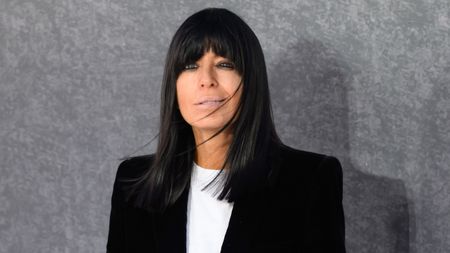 Claudia Winkleman says 'culottes are back' and we couldn't agree more
Claudia Winkleman says 'culottes are back' and we couldn't agree moreCulottes are a smarter alternative to jeans and they’re so comfortable we’re not surprised Claudia Winkleman loves them.
By Emma Shacklock Published
-
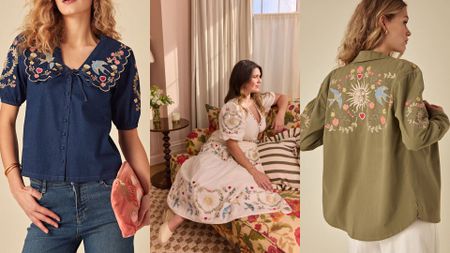 Nobody's Child x Elizabeth Scarlett is the collaboration of dreams - don't miss the beautiful embroidered midi dresses
Nobody's Child x Elizabeth Scarlett is the collaboration of dreams - don't miss the beautiful embroidered midi dressesPrices start from just £18
By Caroline Parr Published
-
 I'm a fashion writer on the hunt for comfortable denim, and these stretchy flared jeans from Saint + Sofia are game-changing
I'm a fashion writer on the hunt for comfortable denim, and these stretchy flared jeans from Saint + Sofia are game-changingA flattering fit, a retro silhouette and added stretch – these flares are a must have
By Molly Smith Published
-
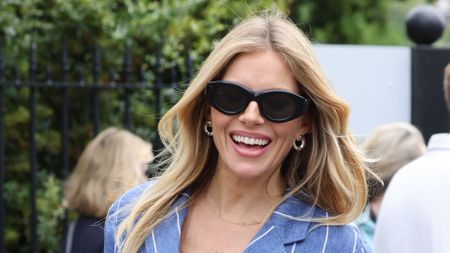 Remember Sienna Miller's Ralph Lauren suit? We're recreating it with this dreamy denim two-piece
Remember Sienna Miller's Ralph Lauren suit? We're recreating it with this dreamy denim two-pieceWe fell in love with Sienna Miller’s pinstripe Ralph Lauren suit when she wore it to Wimbledon back in 2023
By Charlie Elizabeth Culverhouse Published
-
 These stylish 'pyjama' jeans are the £39 high street buy you need for a comfy spring
These stylish 'pyjama' jeans are the £39 high street buy you need for a comfy springWe've found a pair of high street 'pyjama' jeans that blend the flattering wide-leg look of denim with a super comfortable elasticated waistband.
By Charlie Elizabeth Culverhouse Published
-
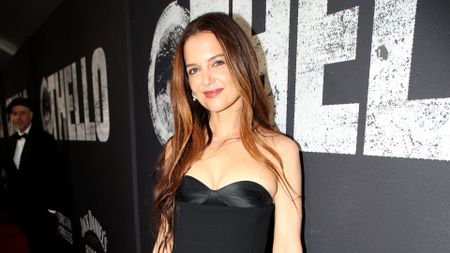 Need accessories inspiration for a black maxi? Katie Holmes just wore kitten heels and snake print with hers
Need accessories inspiration for a black maxi? Katie Holmes just wore kitten heels and snake print with hersKatie Holmes dazzled for the opening night of Othello on Broadway and showed us all a timeless way to style a black maxi dress
By Charlie Elizabeth Culverhouse Published
-
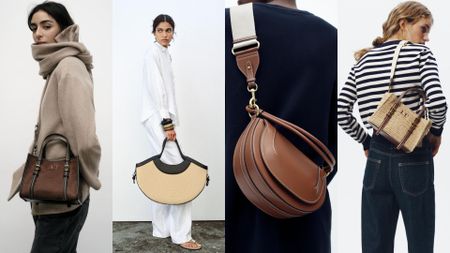 The Zara personalised bag collection brings luxury style to high street shoppers, just in time for spring
The Zara personalised bag collection brings luxury style to high street shoppers, just in time for springNow you can customise your Zara bag for just £3
By Molly Smith Published
-
 Pistachio green not your shade? Helen Skelton shows how peony pink is done
Pistachio green not your shade? Helen Skelton shows how peony pink is doneHelen Skelton has showcased another one of the season's biggest colour trends and it's a joyful alternative to calming green.
By Emma Shacklock Published
